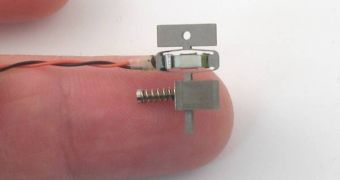One of the most daring dreams that scientists have is to create a world that is completely self-sustaining, and which is not reliant on exterior sources of power for it to operate. This means that everything requiring electricity will have to reach a high-level of conservation abilities, and also that new and radically different sources of power need to be found. One possible solution regards piezoelectric materials, which are largely touted to be the power generators of tomorrow. They have the largest prospective applications in nanoscale devices.
Piezoelectric materials are usually specific classes of crystals or ceramics, which have the ability to generate electrical potential when physical strain is applied on them. For example, squeezing a piezoelectric crystal in your hand causes it to deform, and, if a voltmeter is attached to it, the device indicates a change in the current moving through it. When many such crystals are placed together, and buried under asphalt on sidewalks, for example, they could at least in theory produce sufficient electricity to power up neighboring stores.
The main line of research in the international community at this point is finding ways of introducing these materials into nanoscale devices, which would become able to power up cell phones, MP3 digital music players, and even biomedical implants, such as pacemakers.
“Nanodevices using piezoelectric materials will be light, environmentally friendly and draw on inexhaustible energy supplies. Imagine a sensor on the wing of a plane or a satellite. Do we really want to change its battery every time its power source gets exhausted? Hard-to-access devices could be self-powered,” University of Houston Cullen College of Engineering Associate Professor Pradeep Sharma explains. The College is currently developing two projects based on piezoelectrics.
“Indeed, gas lighters used in most homes are based on this. These future piezoelectric nanodevices will also generate an electrical current in response to mechanical stimuli. Then, the energy will be stored in batteries or, even better, in nanocapacitors for use when needed,” he adds. The main issue the scientist's team needs to overcome is understanding exactly how flexoelectricity – the basic principle behind piezoelectric materials – appears in nature.
“Flexoelectricity, at the nanoscale, allows you to coax ordinary material to behave like a piezoelectric one. Perhaps more importantly, this phenomenon exists in materials that are already piezoelectric. You can make the effect even larger,” Sharma adds. “Recent technological advances and breakthroughs play an important role toward achieving that goal, but we need to be patient. Quantum mechanics, the basis of modern electronics, was 'discovered' in the early 1900s. Think how long it has taken for us to exploit that.”

 14 DAY TRIAL //
14 DAY TRIAL //